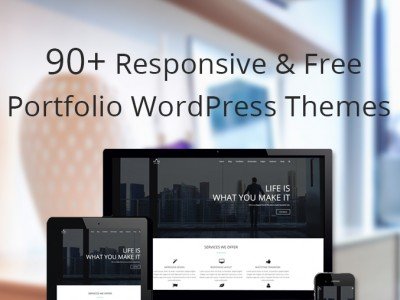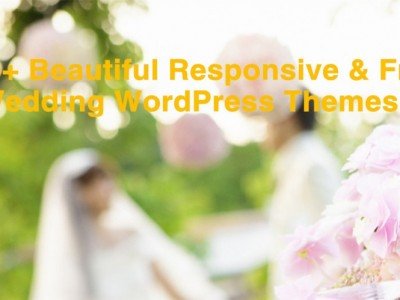Landing Pages From Single Page WordPress Themes
If you are going to expand your business online, creating a thrive landing page is a necessary. First of all, it is important to learn something about the landing pages, and then you need to choose an appropriate landing page WordPress theme for your site. This post will introduce to you information about the landing page and WordPress landing page.
What Is a Landing Page?
General Definition of the Landing Page
A landing page refers to any Web page that a user arrives at after clicking a hyperlink. The definition of the landing page has changed from being synonymous with a website’s home page to referring to any page within a website that is linked to another location on the Web. A landing page is usually a stable URL that is indexed by search engines, opposite to a temporary splash or jump pages that are used to move traffic to a site for marketing purposes.
Techopedia Explaination
Like many early World Wide Web terms, the definition of the landing page has strayed from its original meaning. Landing pages were once the main focus of marketing efforts, so most websites would maintain a few for various campaigns in addition to a home page. The idea was that the users would come in to the customized landing pages and then click through to the content selected for those pages, or opt-in to an email list or perform whatever action was desired.
Search engines changed things by making any page with relevant content for a particular query into a landing page. This meant that websites had to focus on creating a cohesive feel and spreading any marketing campaigns site-wide, rather than focusing on dressing up a few pages and driving the traffic there.
A landing page is a web page that’s designed primarily to capture a visitor’s attention and their details—like an email address—via a lead form. They are designed to target a specific audience depending on the product you are marketing.
A landing page can also be a squeeze page used to redirect traffic to the main website. You can have as many landing pages as you want on your site. In fact, the more landing pages you have, the more leads you are likely to get.
Types of Landing Page
There are 2 basic types of landing page, Click Through and Lead Generation (also referred to as Lead Gen or Lead Capture pages).
Click Through Landing Pages
Click through landing pages (as the name implies) have the goal of persuading the visitor to click through to another page. They typically appear in e-commerce funnels. You can use the landing pages to describe a product. Also, you can use them to offer sufficient detail so as to “warm up” a visitor to the point where they are closer to making a purchasing decision.
All too often, inbound advertising traffic is directed at shopping cart or registration pages. This leads to poor conversions as the ad doesn’t provide sufficient information for someone to make an informed decision.
This is where the click through page comes in. As a result, the destination page from a click through page is typically the shopping cart or registration page – now with a much higher chance of conversion having passed through the details of the landing page.
Lead Generation Landing Pages
Lead gen pages are used to capture user data, such as a name and email address. The sole purpose of the page is to collect information that will allow you to market to and connect with the prospect at a subsequent time. As such, a lead capture page will contain a form along with a description of what you’ll get in return for submitting your personal data.
There are many uses for lead gen landing pages, some example uses and the items given to the user are:
- Ebook or whitepaper
- Webinar registration
- Consultation for professional services
- Discount coupon/voucher
- Contest entry
- Free trial
- A physical gift (via direct mail)
- Notification of a future product launch
Key Points of the Landing Page Design
There are no written rules as to what a landing page must have or look like. However, there are always certain key aspects you should considered when designing landing pages.
Here are the top four points:
- Specificity: When designing a landing page, be specific about what you offer. You should also know what’s in it for you. For instance, if you offer free info when a user signs up on your landing page, how are you going to benefit?
- Benefits: The best marketing lingo can get a visitor’s attention, but if you don’t clearly explain how they are going to benefit, your conversions may be thin. A good landing page must be clear on how the user will benefit from the offer.
- Urgency: The wording on your landing page should create a sense of urgency. Explain why a page visitor should take your offer now not later.
- Conversion: Now that you’ve grabbed a visitor’s attention and managed to convince them about your great offer, how do they get it? Your landing page must make lead conversion as simple as possible.
Examples of Ways Landing Pages Used with Various Traffic Sources:
- Traffic is sent from a pay per click (PPC) search marketing campaign (such as Google AdWords) to multiple landing pages optimized to correspond with the keywords the searcher used.
- A banner ad or sponsorship graphic can send traffic to a landing page specifically designed to address that target audience.
- Traffic is sent from a link in an email to a landing page designed to prompt a purchase.
- A blog post or sidebar link can transfer the traffic to a landing page that pre-sells affiliate products or encourages an opt-in to a sub-list .
- The page you’re currently reading is a content landing page designed to organize many related pages around an overall theme.
Landing Pages in WordPress
The name landing page is basically meant to represent a scenario in which the visitor comes to your WordPress website and lands on that specific page – effectively making it the entry point to your website.
Now, what landing pages in WordPress are about is grabbing that visitor and convincing them to take care of a given predefined action. In most cases, this is about getting them to subscribe to an email list, click a specific link/button, buy a product, or perform some kind of social-media-related activity (like clicking the re-tweet button).
In other words, the goal here is to take that new visitor and immediately put them through some marketing process on your WordPress site, as opposed to letting them wander around, looking for something to do.
Why is Landing Page Special on WordPress ?
Of course, you don’t actually need something like a landing page to try convincing your visitors to take some specific action. You can do so from any kind of page built inside the WordPress platform or even from the homepage of the site.
However, the difference here is that a landing page (when executed properly) will always bring better results. This is because of its single-purpose nature, as opposed to a standard homepage. Generally, such homepage tries to present a load of different things and information.
The most interesting thing about landing pages is their design, or more accurately, lack thereof. Most landing pages in WordPress, at least in a way they’re implemented these days, are very minimalistic. They are usually built entirely separately from the rest of the site and retain very little of the site’s original design.
In short, every element that appears on a landing page should reinforce the main goal of the page (getting the visitor to take a specific action), and everything else should be erased.
So in summary, the elements that make a good landing page in WordPress, and also the elements that we’ll focus on in this post are:
- Simple structure with minimal design.
- No sidebars. Sidebars make the design distracting.
- No footer.
- Minimal header. So the visitor can get straight to the copy.
- If you’re going to use a logo, make it un-clickable.
Landing Pages And Single Page WordPress Themes
WordPress offers plenty of ways to build stunning landing pages. Here we offer you one easy options you can use to create your landing pages—Using Single Page WordPress Themes
There are a ton of one page WordPress themes specifically designed for creating landing pages. These single page themes often include great features, such as local scrolling, eye catching sliders, features boxes, etc. This will make building you own landing page easy.
Conclusion
In the purest sense, a landing page is any web page that a visitor can arrive at or “land” on. However, when discussing landing pages within the realm of marketing and advertising, it’s more common to refer to a landing page as being a standalone web page distinct from your main website. The site has been designed for a single focused objective. This means that your landing page should have no global navigation to tie it to your primary website. The main reason for this is to limit the options available to your visitors. This will help to guide them toward your intended conversion goal.
Why not give it a try and build your own landing page with the help of Single Page WordPress Themes? You shall definitely be surprised !








